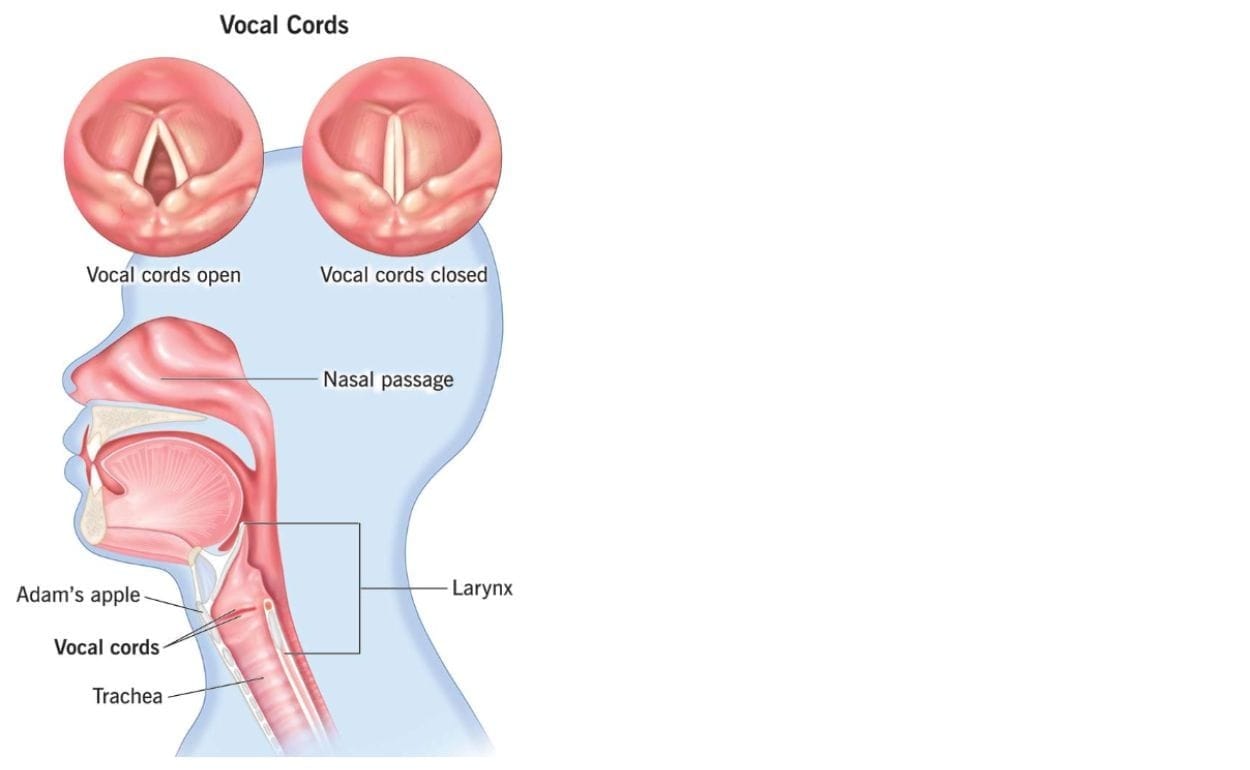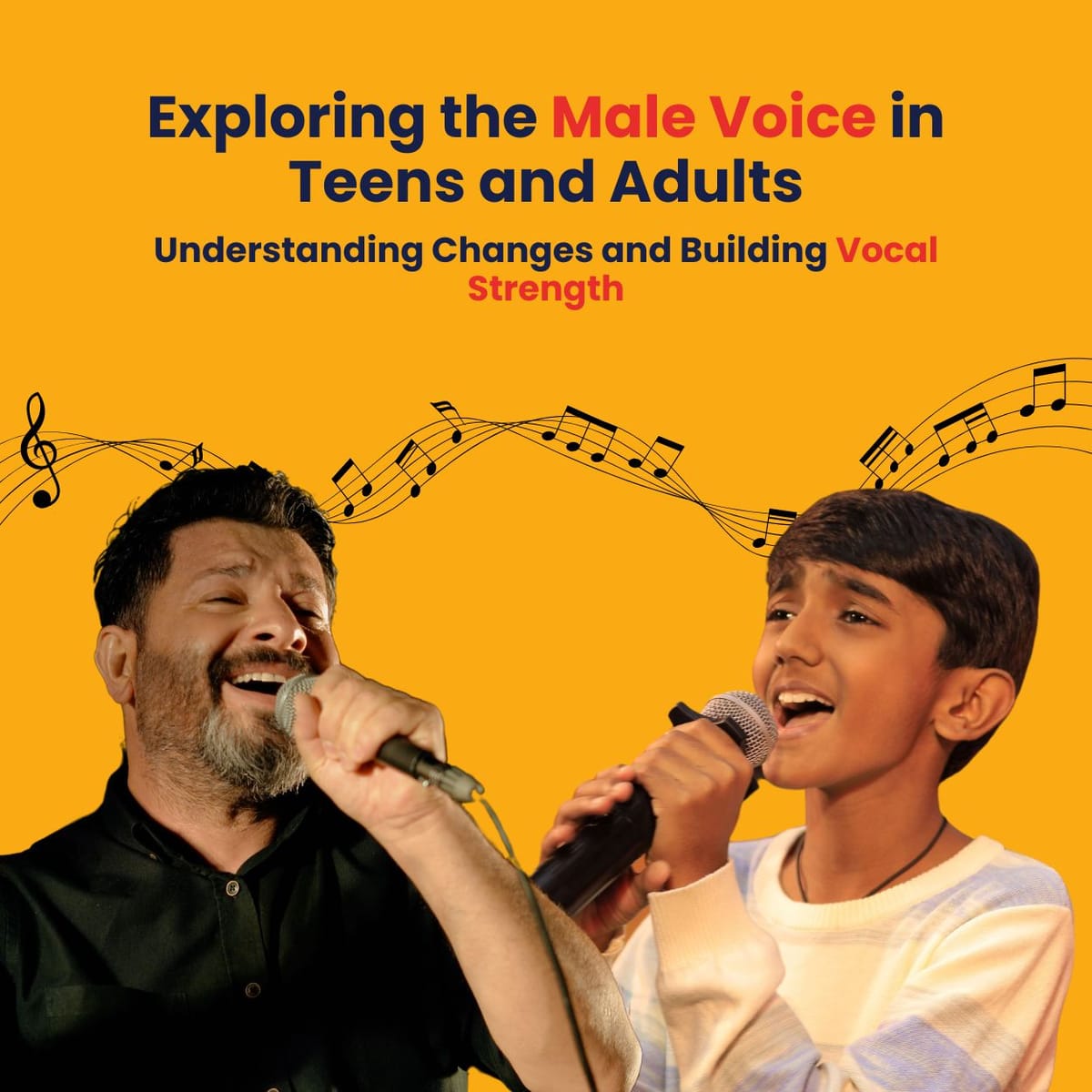
Table of Contents
The male voice is an incredible instrument, it goes through some of the most dramatic changes from childhood to adulthood. Whether you are a teen experiencing voice cracks when singing or an adult male looking to improve your voice, understanding these changes and learning to take care of your voice from the beginning is key.
1. Types of Male Voices
The development of the male voice can be broken down into the following phases, each with its unique characteristics.
a. Pre-Puberty Voice (Ages 8 - 13):
Before puberty, most boys have a high-pitched voice which is light, clear, and almost indistinguishable from that of a girl's voice. At this stage, the larynx (voice box) and our vocal cords are still small, and this is why boys can sing or speak in a higher range easily. Voice typically remains unchanged until puberty hits.

b. Puberty and Voice Breaks (Ages 12 - 16):
The most notable sign of puberty in boys is the ‘voice break’ that starts happening without their control when singing. The larynx starts growing and vocal cords become longer, causing the voice to deepen. This change can be sudden or gradual, and its often accompanied by unpredictable ‘voice cracks’. During this phase, boys can experience shifts in pitch, and the voice might drop by as much as an octave (12 notes down). This process can last several months to a year, depending on the individual.
c. Adult Male Voice ( Ages 17 and Up):
By the late teens, most males will have settled into their adult voice. At this stage, men typically fall into one of the three main voice types:
i. Tenor:
This is the highest adult male voice, bright and open sounding. Tenors can comfortably sing or speak in higher pitches. Some famous examples are Freddie Mercury (Queen) and Michael Jackson.
Song example:
ii. Baritone:
This is the most common male voice type. Baritones have a range that sits between tenor and bass. Their voices are warm and resonant, providing a middle ground in vocal range. Some Famous examples are Elvis Presley, Johnny Cash & John Mayer.
Song example:
iii. Bass:
This is the lowest male voice type characterized by deep, resonant tones. This voice type tends to mature fully a bit later, often into mid 20s as the larynx continues to grow. Some famous examples are Leonard Cohen & Morgan Freeman (Actor).
Song example:
Understanding where your voice falls within these categories is very crucial when choosing the appropriate exercises, whether for singing or for public speaking.
2. Exercises for Building and Maintaining Your Voice
Whether you are a teen whose voice is still changing or an adult looking to enhance your vocal strength, regular vocal exercises are essential for developing a healthy voice.
a. Diaphragmatic Breathing:
Breath control is fundamental to building a strong voice that can perform to its full capacity. Most people, especially teens and young adults, tend to breathe from their chest which limits their breath support. Instead, practice breathing from the diaphragm, you can also call this breathing using the stomach. To do this, lie down, place a hand on your stomach, and breathe in, making sure that your stomach rises rather then your chest. This engages the diaphragm, providing better breath support for singing and speaking.
b. Lip Trills/Rolls:
Lip Trills are an excellent warmup for loosening the vocal cords and reducing tension. To perform this, take a breath and blow through your closed lips, creating a buzzing sound almost similar to that of a motorboat. This exercise is one the best that you can do and is very useful for teens dealing with voice breaks and for adults who want to warm up their vocals without strain.
Lip trill and other warm up exercises
c. Vocal Range & Agility Exercises:
For teens going through the transitional phase, gentle exercises that encourage agility without any strain are crucial. The ‘siren’ exercise is one the best for this. Begin on a low note and slide your voice up to the highest note that you can and back down, just like an ambulance siren would sound like. This stretches the vocal cords without putting too much pressure on them and helps you find your new range as your voice transitions.
For adult men, interval training exercises and riffs exercises are ideal. Practice singing in short bursts, alternating between low and high notes. This builds vocal agility and control, making it easier to switch between pitches without any strain.
d. Pitching Exercises:
When singing, pitch control is the most important thing that needs to happen. Practice matching the pitch by playing a note on a piano and trying to replicate it with your voice, you can use any vowel to do this. This improves your ear for pitch and helps prevent the off-key notes that all new singers struggle with.
e. Vocal Rest and Hydration:
Teens as well as adults need to be mindful of vocal fatigue. Overusing the voice and singing or speaking loudly for long period o time can lead to strain or even irreversible damage to the vocal cords. Vocal rest is just as important as training, particularly after prolonged use. Hydration is another critical aspect of vocal care. Drinking room temperature water keeps the vocal cords lubricated, preventing irritation and helping maintain a smooth, clear vocal tone.
3. Conclusion
The male voice undergoes fascinating changes throughout life. For teens, it can be frustrating to deal with voice cracks and unpredictability, but with patience and care, these changes will stabilize. Once you reach adulthood, your voice will settle into its full form, allowing you to explore its full potential.
For adult men, vocal exercises can help maintain and strengthen your voice, whether you’re aiming to improve your singing, enhance your speaking tone or simply keep your voice in good shape. Understanding these phases of vocal development and incorporating good habits will lead to a confident, strong voice at any age.
Written by
Vishal Agarwal
Western Vocal Teacher
